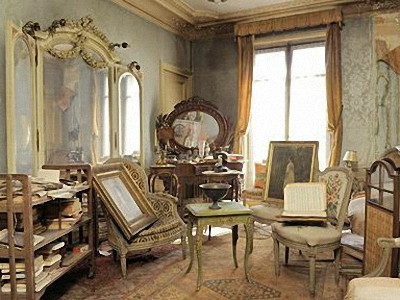What is the turbulent career of 'the most stolen painting in history'?

Well-known works of art such as Leonardo da Vinci's '
Ghent Altarpiece:'most stolen' artwork has new € 30m home in bulletproof glass | Belgium | The Guardian
https://www.theguardian.com/world/2021/mar/25/ghent-altarpiece-most-stolen-artwork-30m-glass-case
'Ghent Altarpiece' is a 15th-century Early Netherlandish work painted in oil on 12 panels and is housed in St. Bavo's Cathedral in Ghent, Belgium. The panel depicts the Virgin Mary, Jesus Christ, John the Baptist , the pigeons meaning the Holy Spirit and the Lamb of God, the Twelve Apostles and the Pope, saints and martyrs.

The altarpiece can be folded, and when the panels on both wings are folded, it looks like this.

The author is
According to art history researcher Noah Charney, 'Ghent Altarpiece' has undergone 13 distresses and 7 thefts. In ancient times, it was looted when Napoleon conquered Europe and returned to Ghent in 1815. Immediately afterwards, however, the Grand Duke of Ghent sells part of the panel to an antique dealer in debt. Also, in 1822, the cathedral struck a fire, and although the 'Ghent Altarpiece' did not burn, the largest panel was broken during the rescue.

After that, the 'Ghent Altarpiece' had been in a disjointed state for about 90 years, but after the end of World War I, Germany returned a panel of Ghent Altarpiece instead of compensation, and 12 pieces. Panels will reassemble.
However, in 1934 a part of the panel was stolen. A person who emerged as a suspected theft died suddenly, leaving behind the words, 'I know where the panel is.' As a result, the following panels are missing, and what has been passed down to the present day is a replica.

In 1940, Belgium was blamed by Germany for stealing the 'Ghent Altarpiece,' which was also the material for the country's diplomatic transactions, and the relationship with Germany became tense again. The government decided to move the 'Ghent Altarpiece' to Vatican, the headquarter of Catholicism. However, because Italy, which holds the Vatican, has signed the Tripartite Pact with Germany and Japan, the 'Ghent Altarpiece' will be stored in an old castle in France for the time being.
The 'Ghent Altarpiece' was then seized by Nazi Germany at the behest of Adolf Hitler in 1941 and brought to Neuschwanstein Castle. Later, when the German war situation deteriorated, it was hidden in the Austrian rock salt cave along with a large number of other works of art. When the German army was defeated at the Battle of the Bulge, which was also Hitler's last bet, a soldier who was in charge of managing the art tried to explode with all the art, but fortunately by a whistleblower The location of the artwork was leaked to the Allied Forces, and the altarpiece was saved from the dynamite blast.
The 'Ghent Altarpiece', which has had a turbulent history, has been restored many times, and one of the twelve is a replica, but it is in a relatively good condition. Since 1986, it has been housed in a glass case with a height of 6 meters, a volume of 100 cubic meters, and a price of 30 million euros (about 3.8 billion yen).
In addition, large-scale restoration work has been carried out since 2012, and it is said that the old varnish layer and topcoat on the upper layer have been completely removed. St. Bavo's Cathedral states that it is the first time since the 16th century that Hubert and Jan have restored from the layers they painted at the time.

Governor Jan Jambon of Flanders, Belgium, said, 'Jan van Eyck is a genius who has surprised the world with innovative technology for over 400 years. The brilliance of colors, details and lighting are all perfect. We are very We are proud to say that we are pleased that the Flemish government has contributed to this and hope that this masterpiece will be shown to children, grandchildren and hopefully many tourists in the near future. ' doing.
Related Posts:
in Art, Posted by log1i_yk







